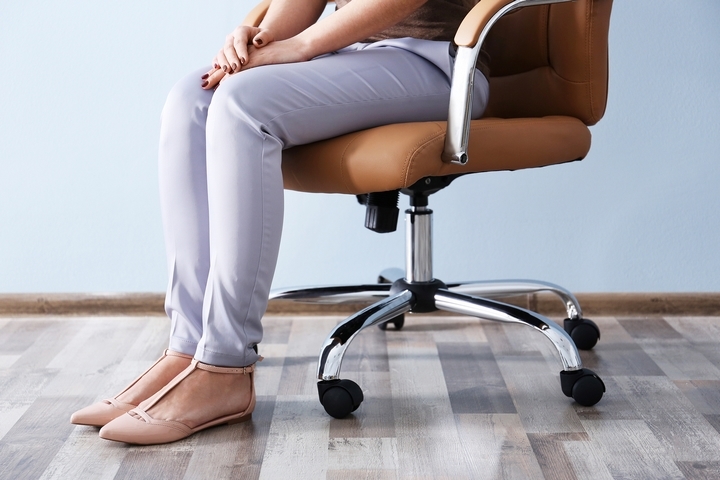
How to Correct Posture at the Computer
We are all becoming increasingly involved in computer-based labour due to advancements in science and technology. It is not uncommon for many people to spend more than 8 hours every day in front of computers. Often, we are so preoccupied with our tasks that we seldom give proper posture much thought. If we aren’t practicing adequate posture, we are exposed to significant health risks, including back, shoulder, and wrist pain and vision loss.
Good posture keeps your body’s joints and bones in proper alignment. As a result, it ensures that your body’s muscles are all functioning correctly. Good posture helps reduce wear and tear on your body’s joint surfaces, preventing arthritis. Proper posture lessens the stress placed on the ligaments that hold the specific joints of the spinal column in place. Plus, it prevents your back from being held in improper positions.
You’ll use your muscles properly by maintaining the correct posture, preventing fatigue. This means your body won’t need to strain itself as a result. Your blood circulation can be improved by having proper posture, which helps improve your body’s energy levels.
You can prevent discomfort, recurrent strain injuries, shoulder nerve issues, and a drooping posture. Here is how to correct posture at the computer:
Tip #1: Sit properly

Pay close attention to maintaining good posture when using a computer if you have to work on one for a significant portion of each day. When you experience back pain, consider getting neurological physiotherapy services for comfort and relief.
Adjust your computer monitor so it is directly in your vision. Modify the screen’s height and distance from you, ensuring to leave an arm’s length. Next, check the height of your computer monitor and adjust it accordingly. In this situation, remember that the display’s top shouldn’t rise more than two inches above eye level.
If your computer screen is too high or too low, it could damage your neck, causing you to strain unnecessarily. Use a computer stand or set a stack of books down below the display to keep your computer screen at the correct height.
Tip #2: Place your keyboard in the right place

Your keyboard must be properly positioned. Leave a 4-6′′ of space between the keyboard and the edge of the desk. The proper positioning of your keyboard will help protect your wrists, taking pressure off them.
If your keyboard is large or in the wrong position and forces you to bend your wrists awkwardly, you may benefit from using a pad as a wrist rest. Make sure your elbows are at a 90 to 120-degree angle from your body when you type.
Tip #3: Find the right chair height

The chair’s height is a crucial element that will affect how you sit. While sitting, you must move the seat up and down so the chair’s legs are properly aligned with the floor. Additionally, make sure your knees and hips are in line. Your feet should rest flat on the floor. If they don’t, you can use a footrest or similar object to provide support for your feet.
Ensure your arms are properly and your elbows can rest comfortably on the desk. Your arms should form the “L” shape of the English alphabet. Avoid overextending your arms because this puts unneeded strain on your muscles.
Tip #4: Find a good leg position

You must ensure that your upper legs, above the knees, are entirely supported by chairs. You risk knee pain if your chair is too small and raises your thighs at an awkward angle. You must also ensure the chair is high enough for your feet to rest comfortably on the floor. Your feet should be positioned parallel to the surface of the floor.
Using an adjustable chair will help you accomplish this. If you don’t have an adjustable chair, you can adjust your height by using cushions to raise or lower yourself.
Additionally, if you are sitting for an extended period, keep shifting your legs occasionally. Taking off your shoes can help make you more comfortable and take pressure off your calves. If you need to adjust the position of your legs, keep in mind you can use a footrest.
Tip #5: Take breaks

While working on the computer, you must take a short break from your work regularly. Taking breaks will significantly increase productivity, prevent various illnesses and discomfort, and greatly rejuvenate your body and mind.
Spending a lot of time in front of a computer might limit blood flow, resulting in muscle weakness. Therefore, you should ultimately stand up and move around every 30 minutes. Stand up, stretch, walk around and get your body moving for a few minutes. This will help keep your body healthy and improve your posture.
While using a computer, it is crucial to maintain proper posture. Aim to have your hips evenly supported on the chair, your knees bent at a straight angle and in line with your hips, and your feet flat on the ground.
Try to release tension from your legs, back, neck, eyes, shoulders, and feet to develop appropriate posture while using a computer. Your body will stay relaxed and comfortable, which will greatly boost your productivity.

